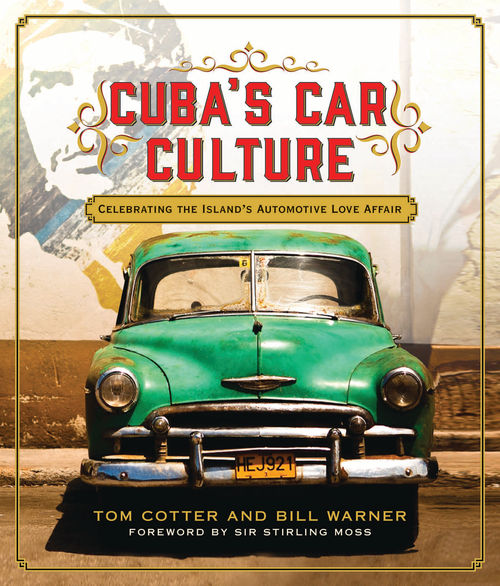OUR CARS IN HAVANA

A Lot of Vintage American Iron Can Still Be Seen Cruising the Streets of Cuba as Daily Drivers. But Would You Want One of These Cars In Your Garage? Well, Maybe…
Editor’s note: When someone mentions Cuba, no doubt one of the first images that comes to mind is sunny streets crowded with American cars from the 1950s. Many folks think of it as a vast national car corral where you could have your pick of gleaming, complete vehicles that, thanks to the island’s tropical climate, have never encountered a single snowflake or solitary grain of road salt. And now that relations between the U.S. and the island nation have opened a bit and with the recent death of Fidel Castro, it might be just a matter of time before American auto enthusiasts can fly down there, select the car of their dreams and have it shipped home, needing just an oil change and some buffing to ready it for a cruise or a car show.
But while some of that image regarding American cars in Cuba is partially true, much of it is just another automotive daydream without much basis in fact. When shipments of American cars to the island stopped in 1959 following the revolution led by Fidel Castro, locals did have to hold onto their ’30s, ’40s and ’50s cars because they no longer could trade them in on the latest models. But that also means that these cars have been used as drivers for six, seven or even eight decades without a proper supply of replacement parts or disposable income to keep the vehicles looking good and running well.
Still, the subject of Cuba and its American automotive population is a fascinating subject to explore, and when we learned of the new book “Cuba’s Car Culture” we knew we wanted to excerpt a few chapters and share them with you on these pages. If you aren’t hooked on the complexity of this topic yet, consider that this book has been described as “a whirlwind tour of all things automotive, beginning with Cuba’s pre-Castro car and racing history and bringing us up to today’s lost collector cars, street racing and the challenges of keeping decades-old cars on the road.”
So let’s all grab our straw hats and sunglasses and go for a drive through downtown Havana…

From the Book Jacket
Cuba is famous as an automotive time warp where on any given day you might spot dozens of vintage Chevrolets… cruising along as though it were still 1959. But look closer and you’ll see things aren’t quite what they seem—half a century of trade embargo has forced the country’s car enthusiasts to develop a unique culture marked by great creativity, borne of the need to keep cars alive with little access to original replacement parts and little opportunity to import modern replacements.
“Cuba’s Car Culture” offers an inside look at a unique universe populated with repaired and recycled cars transformed in the spirit of automotive survival.
From Chapter 1—January 1, 1959: The Day Everything Changed
Probably never imagining the impact his takeover would have on his country’s industry, commerce and infrastructure when he claimed himself leader of Cuba on New Year’s Day, 1959, Fidel Alejandro Castro Ruz threw the country into an economic suspended animation that persists today.
The United States promptly responded to Castro’s rise to power by placing an embargo on all trade relations with Cuba. This meant the United States was denied Cuban cigars, rum and sugar, but Cuba was denied so much more. US-based companies—Coca-Cola, Frigidaire, Chevrolet and hundreds of others—ceased doing business on the island, and that embargo was still in effect at the time of this writing.
One by one, Ford, General Motors, Chrysler and Rambler dealership owners shuttered their storefronts and escaped to America, South America and beyond. For the first few months or maybe even a year or two, life continued pretty much unchanged for the Cuban citizens who were forced to remain on the island. But as their cars started to break down, the supply of spare parts started to rapidly dry up.
It was like the world’s cruelest joke: Cubans were driving thousands of American cars just 90 miles from Key West, Florida, yet they could source no American parts to keep them in good running order. Instead, motorists were forced to adapt parts made in Russia and Czechoslovakia, many of
which were designed for trucks and tractors, slowly converting their cars to automotive Frankensteins.
Over time, the car owners of Cuba have become, by necessity, possibly the most competent mechanics on the planet.
Chapter 3—Colorful Yank Tanks
In the book “Che’s Chevrolet, Castro’s Oldsmobile”, Richard Schweid estimates that today more than sixty thousand pre1960 American cars prowl the streets of Cuba, most of them in the congested cities of Havana and Santiago de Cuba. Of those, roughly half are from the 1950s, 25 percent are from the 1940s, and 25 percent are from the 1930s.
If you were to stand on a busy street corner in the center of Havana near the Hotel Parque Central, you would see dozens and dozens of colorful American cars, parked along the curb, waiting for taxi clients, or vying for a spot in the moving parking lot that embraces this center city from sunrise to sunset. Interspersed between the old American iron is an odd mix of 1970s Russian-built Ladas (retooled Italian Fiat 131 sedans), new Chinese Geelys (which resemble late-model Cadillacs and Chevys), and the occasional Soviet-era Volga, Wartburg or Škoda. Once in a while, you might see a latemodel Mercedes-Benz or Audi negotiating the many potholes that exist on Cuban streets. These cars, we were told, belong to diplomats or non-American corporate executives, possibly from one of the oil companies that do business on the island.
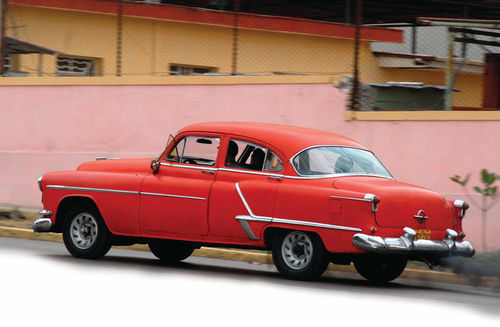
Cars Are Cuba’s Brand
If you’ve seen a magazine article, news segment, or Travel Channel TV show about Cuba during the past decade, chances are the first image was that of colorful old American cars. Those cars have become the country’s brand, and it’s probably the first topic of conversation you are likely to hear when you mention Cuba to friends, family and especially car guys.
We hear the same mantra all the time from our car-enthusiast friends: “When relations between the United States and Cuba open up, I’m going to go down there and buy a bunch of those old cars, then bring them back to the States and sell them for a fortune!” We hate to burst bubbles, but even if it were legal to export a car from Cuba—which it’s currently not—a few days on the island will quickly change most car enthusiasts’ opinions.
In the States, car guys have an expression to describe cars that look worse the closer they get: 30-footers. From 30 feet away, the car looks great, but its flaws become more apparent with every step closer.
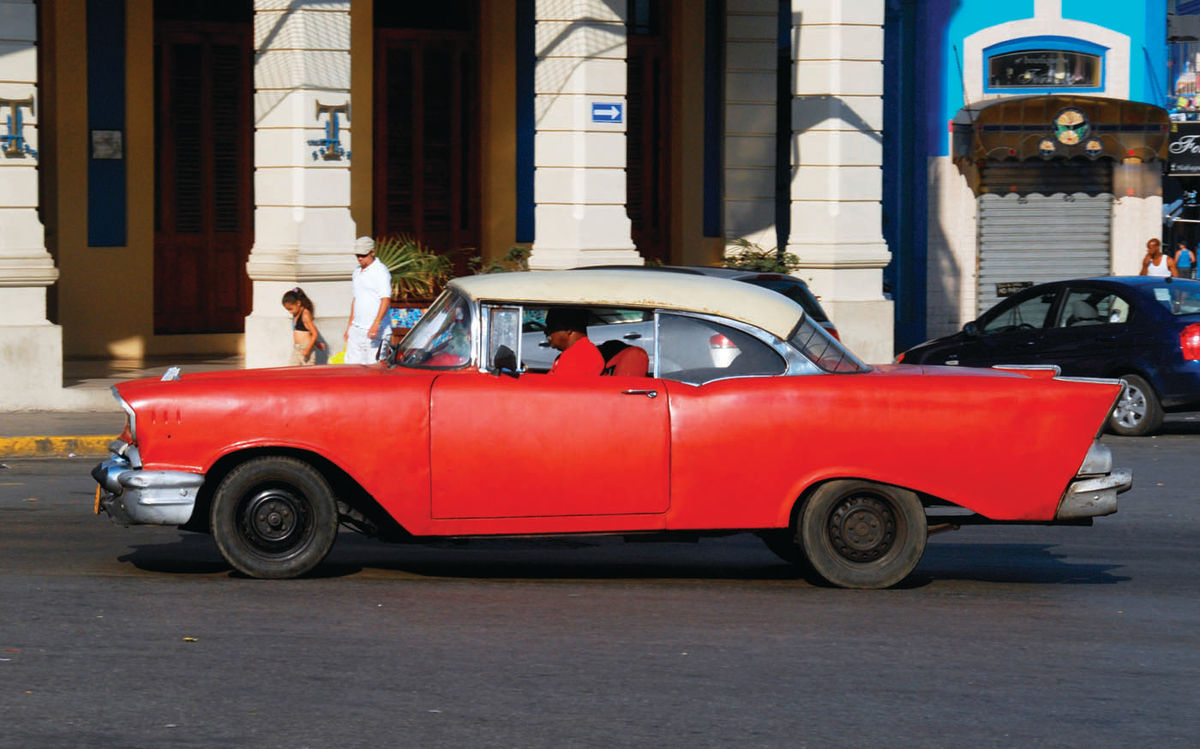
In Cuba, we coined the phrase 100-yarders!
The colorful Cuban cars you see on the Discovery Channel, or in Traveler magazine, don’t tell the full story. When you read about “impeccably restored classic American cars,” don’t believe a word of it.
In all fairness, the cars that are restored to a high level by Cuban standards would rank as No. 4 in the United States, according to Sports Car Market’s valuation criteria. But 99.9 percent of the American cars on the road here are finished to a far lower level, ranking five and below. They have been patched and bandaged together for decades. The term “restored” is academic. These cars are nostalgic—old and still running, but that’s about it. Very few truly restored cars exist on the island, mostly due to lack of money, talent, and/or materials.
Think of the car sitting in your driveway. When it’s new, everything is tight and works flawlessly. But as the new-car smell dissipates and more miles accumulate on the odometer, your car will start to develop squeaks and rattles, and parts will begin to fail. By the time it’s five or six or seven years old, you’ll probably start thinking about trading it in for a new model.
Now compare that five- or six- or seven-year-old car to the average Cuban’s fifty- or sixty- or seventyyear-old cars. We even saw some eighty-year-olds—Model As and 1935 Fords—that were still operating on a daily basis. Compound that age with incredibly rough roads, poor gas quality, and an almost complete absence of correct spare parts, and you’ll begin to appreciate just how ingenious the Cubans are.
From 100 yards, the cars of Cuba can easily be identified as Fords and Chevys and Pontiacs. But the closer you get, the more subtle styling changes become visible. Over time, the cars have become an automotive “stew,” with parts from one year or brand of car adapted to fit on another.
It’s not unusual to see a 1951 Chevy with a 1955 Chevy grille. Or VW taillights adapted to a Buick. Sometimes these swapped parts look totally plastered on, just installed to get the car back on the road. But often, local craftsmen actually sculpt the new pieces onto cars in a very convincing manner. Cubans are a proud people, and even though most of them are very poor, they try to keep their cars looking respectable.
Trim items such as grilles and bumpers are taken from other cars when they exist, but local craftsmen have also become quite adept at beating metal into the same approximate shape as the original item. Sometimes trim pieces are wrapped in tin foil to give the illusion of being chrome. It’s not perfect, but in a pinch, it works.
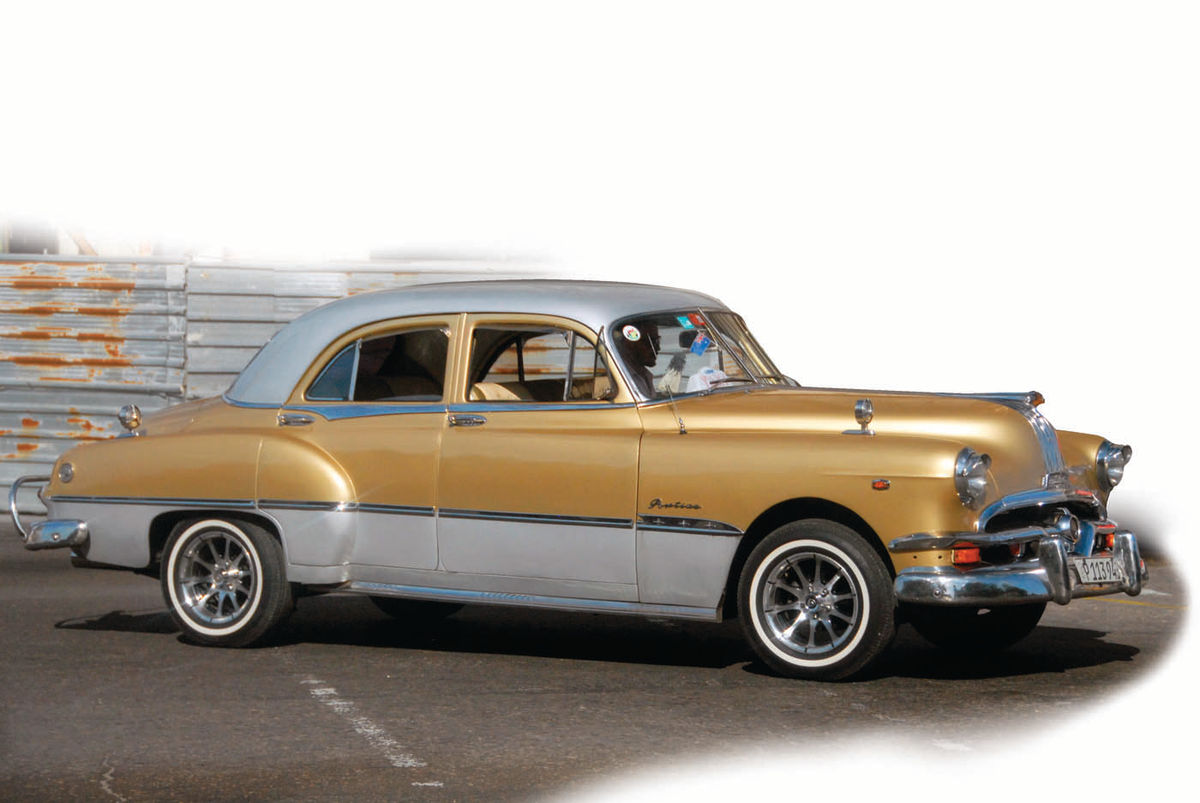
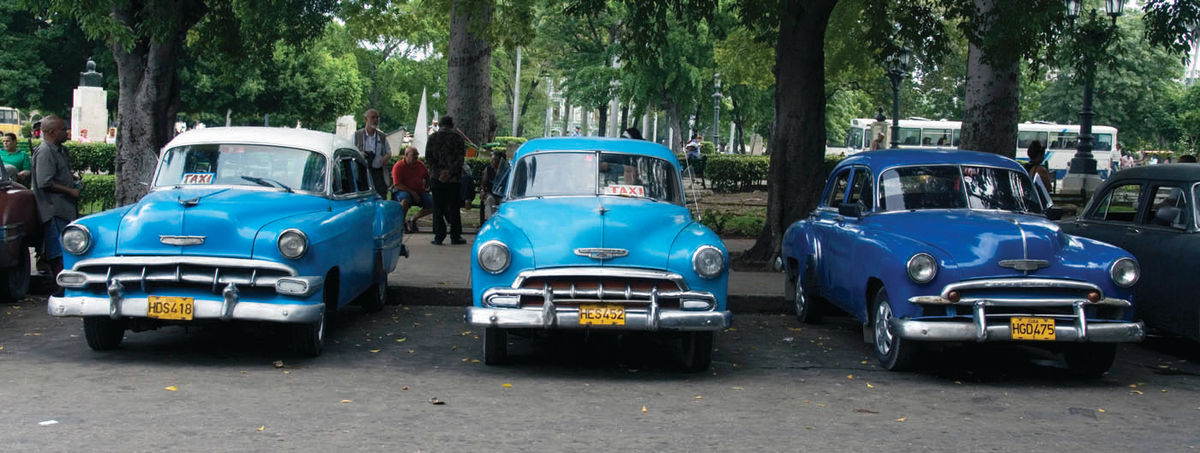
Chapter 4—The Myth of the Romance
“The Cuban people are so tired of these old pieces-of-s*** cars,” said our translator, Abe. “They run on nothing! If they ever have a chance to buy a new car, they will!”
So many TV shows and magazine stories have been written about the love affairs that Cuban owners have with their cars, and how meticulously restored and cared for they are.
Nope.
Abe vocalizes what nearly every Cuban feels, but cannot say, for fear of retaliation. The truth is that they hold no romance in the old cars they drive; that romance exists only for the tourists who have not seen similar cars for half a century. Cubans repair and use these old cars because that’s all they can do— there are no alternatives. It’s necessity, not a love affair.
These cars provide incomes to thousands of residents who might not have another way to scrape together a living in this failing economy. “Once the Russian economy collapsed, and we stopped receiving support from the Soviets, we started to receive tourists again,” said Abe.
“Now Cubans look forward to better relations between our two countries, so they are all trying to get their cars in better condition.”
Cuba’s Black Market
During our first trip to Cuba back in 2009, we were naïve and actually believed that folks survived on the equivalent of just $5 in US dollars a week. While that may be true in some cases, probably for farmers and those living in the rural parts of the country, that rule does not apply to everyone.
At CUC$20 per month—the government stipend each Cuban citizen receives regardless of whether they are a doctor or a street sweeper—a citizen cannot save CUC$30,000 in their lifetime to buy a used car. According to Abe, twenty bucks a month is not enough to pay the power bill and buy groceries.
In addition to the stipend, each Cuban citizen receives a small amount of chicken, sugar, and a few other necessities. But residents have found often ingenious ways to supplement their meager salaries.
It’s ironic that one of the Earth’s last strongholds of Communism is also a breeding ground for capitalism and entrepreneurship. So many people have “side deals” that there is actually a healthy underground economy— and for some, a thriving one. Cubans often turn their dining rooms into makeshift restaurants that offer tourists the chance to taste authentic, homecooked island food. Those handy with tools will do auto repairs literally in the street, performing everything from brake jobs to engine rebuilds on the side of the road. And there are plenty of English-speaking Cubans who will make their services available as translators and tour guides for tourists.
“In Cuba, people pretend to work, and the government pretends to pay,” is what we were told by one tour guide. He also gave us this bit of wisdom: “Cuba is the only country where you can live without working, but you can’t live if you work.”
In automotive terms, this underground economy explains how a rough but running 1958 Chevy four-door sedan could be se vende (for sale) with an asking price equivalent to roughly US$35,000. That same car in the States could be purchased for one-third that amount. And the stateside car would certainly be in better condition, with more original parts still intact.
It’s all about supply and demand; fewer cars on the market mean consumers must pay top dollar to purchase one. And purchasing a car is only possible because of the flourishing black market.
It appears that the Cuban government simply turns a blind eye to this parallel economy. The personal incomes of many everyday Cubans are likely several times larger than they admit.
